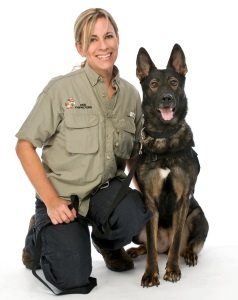
by Brianna Crandall — July 20, 2015—Given that managing a large facility is a difficult and complex job, the thought of having to deal with a bed bug infestation in a facility can be even more exhausting—and for good reason. The removal process can be costly and time-consuming, and once those living in, visiting, or working in a facility hear about an outbreak of bed bugs, the problems can become significantly worse, notes pest control provider Dog Inspectors.
The company advises facilities managers to think seriously about a proactive bed bug plan and procedure. According to Dog Inspectors, about 60 percent of pest control professionals have found bed bugs in nursing homes in the past year, a 14 percent increase since 2013. About 36 percent of exterminators reported seeing them in hospitals, up from 22 percent last year. In doctors’ offices, reported infestations have risen from 26 percent to 33 percent in the past two years.
Bed bugs can also find their way into libraries, offices, retirement homes, laundry facilities, planes, trains, and buses—practically any space in which people commute, work, or reside, the company points out.
Chuck Nelson, owner of Dog Inspectors, which uses trained, certified detection dogs to find bed bugs in commercial and residential buildings, offers these three tips to help avoid an infestation in any facility:
Stay proactive: Before the possibility of a bed bug problem even arises, be prepared with a plan for how it is to be handled. Create a strong policy that tenants or employees understand and will follow, including regular proactive pest control or K-9 inspections, plans for quarantining personal and company belongings, treatment or remediation, and documentation of complaints, actions taken, and follow-up visits. Discuss the plan with the facility’s pest management company and know what resources they provide. Also, for good measure, be sure to budget annually for bed bugs and other unexpected but related costs.
Keep facilities uncluttered: Although bed bugs do not discriminate between clean and dirty areas, they do tend to congregate in cluttered places. Regularly assess maintenance and cleaning processes. To minimize chances of an infestation, focus especially on vacuuming, dusting, and washing materials in hot water.
Institute routine inspections: Each quarter, schedule a pest control or K-9 inspection of all areas of the facility. A routine inspection will offer peace of mind. Remember too, if a small infestation does occur, regular inspections will more likely spot it before it becomes a larger, more costly issue.
Even when these tips are put into practice, most if not all facilities managers will at some point encounter a bed bug problem. When responding to a complaint of possible bed bugs, follow these guidelines:
- Respond with empathy and understanding for the person making the complaint: Bed bugs can cause fear and hysteria, so a little kindness and compassion can go a long way when speaking with the person who reported seeing bed bugs.
- Promptly inspect the areas in question, especially beds and areas where luggage might be stored: Look for the bugs themselves, their shed skins or dark spots on sheets, bedding, walls, electric outlets, etc., as this may be an indication of bed bug fecal remains.
- Contact the facility’s pest management company: The sooner the problem is eradicated, the better. Make certain that whoever treats the problem has a great deal of experience in bed bug eradication and offers a warranty for their work.
- Schedule a follow-up pest control or K-9 inspection after the treatment has been completed to confirm that all bed bugs have been eliminated.
- Document all actions taken.
Bed bugs are not something to take lightly, especially in living and work facilities. Nothing will cause tenants or employees to scatter faster than a report of bed bugs in the building, says the company. Always be proactive and respond to any reports in a timely manner.
For more information about the Dog Inspectors’ services, visit the company’s Web site.




